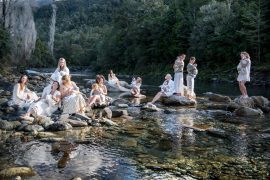By Yaki Wo
12th May 2019 was Mother’s Day. That morning I cried. It was a challenging day because it was the first Mother’s Day when my own mother, died last year from cancer, was no longer earth side. It was also the first Mother’s Day when I was a mother in the making.
At the time of writing, I am 22 weeks pregnant with our first child. My husband and I are filled with excitement and joy. But as many of you would know, welcoming a new life, especially the firstborn, can also be very stressful.
The hormones, the new responsibilities, the foreseeable changes to our lifestyle and the typical, over-enthusiastic influx of advice from friends and family all blend in the big melting pot of anxiety.
In my case, I am also pretty isolated physically. Having moved to New Zealand three and a half years ago – from Hong Kong to London to Shanghai – I work from home in Auckland, i.e. no colleagues I see everyday, have no family around other than my husband, and just one friend in the same city who has had recent experience of giving birth (and is still in the early months of coping with her newborn).
What has helped prevent the anxious pot from boiling over, is my connection with nature.
Less than a month after my mother’s funeral last year, I started training as a forest therapy guide with the Association of Nature and Forest Therapy (ANFT). Organising the funeral and managing the associated logistics was physically and emotionally exhausting. I felt like I was not given the time and space I needed to come to terms with my mother’s death. My intention for the training was to retreat into nature, spend some time on my own to rest, and to properly grieve.
Little did I know that I would (re-)establish a strong bond with nature, which has since supported me from mourning the loss of my mother, to welcoming the arrival of a new life.

Like a lot of nature lovers, I experienced and continue to experience awe in nature. This feeling of awe is often accompanied by the realisation of how small and trivial the self is, and is described by Dr Paul Piff as “that sense of wonder we feel in the presence of something vast that transcends our understanding of the world”.
More importantly however, I feel reconnected to where I come from and where I belong. I feel reunited with my long-lost family of other, non-human beings. Like most people who have lived in cities, I had been “plant-blind” all my life – unable to see or notice the plants in one’s own environment, according to Elisabeth Schussler and James Wandersee who coined the term in 1998.
The forest therapy guide training enabled me to see and feel myself as a strand of a web of inter-being, not right at the centre of it. Instead of walking past plants as if they are just there as a backdrop, I have learnt to really see them, acknowledge them, and communicate with them. I feel safe and watched over by a village of tree elders when I look outside my window. I am soothed and comforted when I share with them my worries. I become less obsessed with “me”. I am much more able to let go of experiences and feelings that are unpleasant, seeing the fact that we are, quite simply, stardust.
By now you are probably thinking that I am just another believer of some woo-woo, new age practice. But whether I actually have conversations with trees, or if I am just projecting my imagination is quite beside the point. It is the experience that matters. The experience allows me to surrender the need to control (as most anxious perfectionists tend to do), and to trust the universe (or God, or the Way, whatever it is you believe in).
As a matter of fact, there is a whole host of scientific evidence that supports the health benefits of spending more time in nature. We will get back to that.
So, what is forest therapy really? Simply put, forest therapy is the practice of healing through the mindful (re-)connection with nature, and hence with ourselves and our communities, via our senses and feelings.
Forest therapy originated from the Japanese concept of Shinrin Yoku, literally translated as forest bathing. In the 1980s, the Japanese government noticing a rise of stress-related autoimmune diseases among its population conducted research looking into the impact of spending more leisurely time in nature. This led to the establishment of a nationwide forest bathing program as a form of preventive healthcare, with designated forest bathing trails and certified forest therapists.
Of course, healing through nature is deeply rooted in many cultures since the beginning of time. What the Japanese started was a scientific, evidence-based, systematic design of forest therapy. Sometimes the term nature therapy is used instead, to extend the scope of practice to other landscapes or natural settings such as beaches, wetlands, urban parks, botanical gardens, etc.
In a typical forest therapy walk, I (or any ANFT-trained guides) guide, we start with invitations (facilitated, voluntary activities) to slow down and open the senses, followed by relaxing movements and still invitations to deeply connect with the surroundings. Circle sharing is used in between invitations to help connect participants with each other in a safe, mutually-supportive environment. The walk is culturally-neutral and not physically-strenuous – meaning anyone, regardless of background, experience, religion/faith, ethnicity, age, gender, physical abilities, sexual orientation, is welcome.











